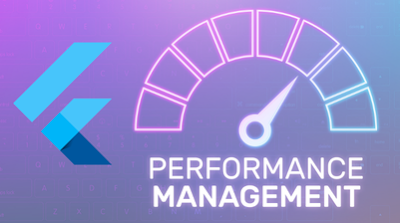 |
| Flutter - Performans Optimizasyonu |
Herkese merhaba. Bu blog yazısında sizlere Flutter uygulamalarımızı daha hızlı ve sorunsuz hale getirmek için kullanabileceğimiz bazı temel teknikler ve ipuçlarından bahsetmek istiyorum. GooglePlay’de ikinci uygulamamı yayınlamak üzereyim ve bu süreçte görseli, tasarımı, UI elementleri üzerine düşündüğümden daha fazlasını performans konusu için düşünmek zorunda olduğumu fark ettim. Çünkü uygulamanız ne kadar şık görünürse görünsün, performans sorunları varsa kullanıcı deneyiminin olumlu olması mümkün değil. Bu yüzden bu konuyu araştırdım ve bulduklarımı aşağıda sıraladım.
1. Render Performansı: Gereksiz Yeniden Çizimleri Engelleyin
Bir Flutter uygulamasında, her değişiklik ekranın yeniden çizilmesine neden olabilir. Bu, performans açısından çoğu zaman büyük bir sorun yaratır. Gereksiz yeniden çizimlerden kaçınarak uygulamanızı optimize edebilirsiniz.
constAnahtar Kelimesi:constile tanımlanan widget'lar değişmezdir ve gereksiz yere yeniden çizilmezler. Özellikle statik yapılar oluştururkenconstkullanmak, performans üzerinde büyük bir iyileştirme sağlayabilir.
const Text(
'Merhaba Dünya!',
style: TextStyle(fontSize: 24),
);Bu şekilde tanımlanan widget, değişmediği sürece yeniden çizilmeyecektir.
'shouldRebuild'Kontrolü: Bazı widget'lar içindeshouldRebuildişlevini kullanarak, yalnızca belirli koşullar sağlandığında widget'ın yeniden çizilmesini sağlayabilirsiniz.
@override
bool shouldRebuild(covariant CustomWidget oldWidget) {
return oldWidget.value != value;
}2. Liste Performansı: Büyük Listeleri Optimize Etme
Büyük veri kümeleriyle çalışmak, özellikle uzun listeler görüntülenirken performans sorunlarına neden olabilir. Flutter, bu tür durumlar için çeşitli optimizasyon araçları sunar.
ListView.builder: Sabit bir uzunluktaki veya büyük bir listede, tüm öğeleri aynı anda yüklemek yerine, yalnızca görünümdeki öğeleri yükleyenListView.builderkullanmak daha performanslıdır.
ListView.builder(
itemCount: items.length,
itemBuilder: (context, index) {
return ListTile(
title: Text(items[index]),
);
},
);ReorderableListView: Sıralanabilir listeler oluştururken, performansı korumak için bu widget kullanılabilir. Aynı şekilde, yalnızca gerekli olan widget'ları oluşturur ve performansı artırır.
3. Asenkron Kodlama: UI’yi Kilitlemeden İşlemleri Yönetin
Ağ istekleri veya uzun süren işlemler gibi zaman alan işlemler, UI’yi dondurabilir. Flutter’da asenkron işlemleri yönetmek için birkaç araç bulunuyor.
FutureBuilder:FutureBuilder, bir asenkron işlemin tamamlanmasını beklerken, UI'de bekleme durumu göstermenizi sağlar. Bu sayede, uygulamanız kullanıcılara sorunsuz bir deneyim sunar.
FutureBuilder(
future: fetchData(),
builder: (context, snapshot) {
if (snapshot.connectionState == ConnectionState.waiting) {
return CircularProgressIndicator();
} else if (snapshot.hasError) {
return Text('Hata: ${snapshot.error}');
} else {
return Text('Veri: ${snapshot.data}');
}
},
);asyncveawait: Bu anahtar kelimeler, işlemlerin asenkron şekilde yapılmasını sağlar.await, işlemin bitmesini beklerken,asyncişlemin tamamlanmasını belirtir. UI'nin donmasını engellemek için bu yapıları doğru kullanmak önemlidir.
Future<void> fetchData() async {
final response = await http.get('https://api.example.com/data');
// İşlemlerin burada yapılması gerekir
}4. Gereksiz Paketlerden Kurtulma: Kod Tabanınızı Hafifletin
Flutter uygulamanıza paket eklemek, geliştirme sürecini hızlandırabilir. Ancak, gereksiz veya fazla paketler uygulamanızı şişirebilir ve performansı olumsuz etkileyebilir.
- Bağımlılık Yönetimi:
pubspec.yamldosyanızdaki bağımlılıkları düzenli olarak gözden geçirin. Kullanılmayan paketleri kaldırın ve performans üzerindeki etkilerini ölçün.
dependencies:
flutter:
sdk: flutter
# Kullanılmayan paketleri kaldırın- Minimal Paket Kullanımı: Mümkünse, yalnızca gerçekten gerekli olan paketleri ekleyin. Daha hafif paketler tercih edin ve alternatifleri değerlendirin.
5. Flutter DevTools: Performans Analizi ve Hata Ayıklama
Flutter, performans sorunlarını izlemek ve çözmek için güçlü bir araç olan Flutter DevTools’u sunar. Bu araç ile uygulamanızın CPU ve bellek kullanımını analiz edebilir, UI gecikmelerini tespit edebilir ve performans iyileştirmeleri yapabilirsiniz.
- CPU Profili: Uygulamanızın CPU kullanımını izlemek, hangi işlemlerin fazla kaynak tükettiğini anlamanızı sağlar.
- Timeline (Zaman Çizelgesi): UI’nin nerede geciktiğini görmek için zaman çizelgesi aracını kullanabilirsiniz. Bu araç, hangi işlemlerin en fazla süreyi aldığını gösterir.
- Hafıza Profili: Hafıza sızıntılarını tespit edebilir ve optimizasyon yapabilirsiniz. Fazla bellek tüketen işlemleri belirleyip, bellek kullanımı konusunda iyileştirmeler yapabilirsiniz.
Sonuç: Performans Optimizasyonu Bir Süreçtir
Performans optimizasyonu, ne yazık ki, bir seferlik bir işlem değil. Uygulamayı geliştirdikçe ve yeni özellikler ekledikçe, performans sorunları tekrar tekrar ortaya çıkabiliyor, bunu çok yaşadım. Basit bir değişiklik bir butonun Bu nedenle, düzenli olarak performans analizi iyileştirmeler yapmak gerekiyor.
Araştırmalarım sonucu burada ele aldığım tekniklerin, Flutter uygulamanızı daha performanslı hale getirmenize yardımcı olacağını umuyorum. Ancak tabi ki her uygulama farklıdır ve kendi özel gereksinimlerine göre optimize etmeyi unutmamalıyız.
Herkese iyi kodlamalar!
Selin.
.png)